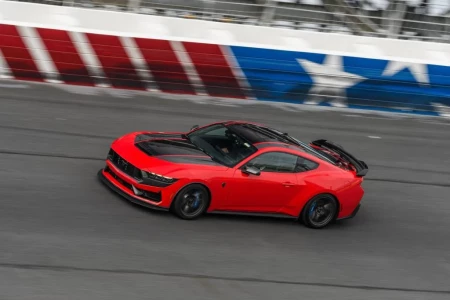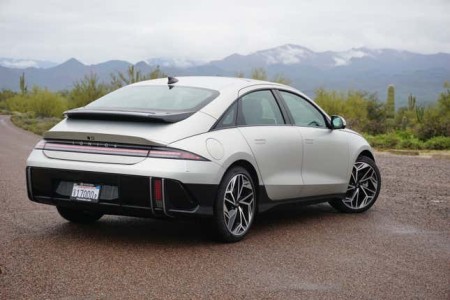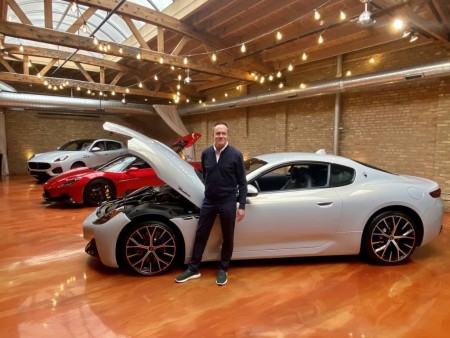EV time moves fast, and Tesla has sold roughly half the 2 million or so all-electric vehicles now on U.S. roads. Audi was late to the EV party, first offering the E-Tron SUV for the 2019 model year, and many long-time owners bought their first long-range electric vehicle from Tesla when Audi had no EVs to sell. Tesla sales in the U.S. now outnumber those of Audi’s entire lineup.
The 2024 Audi Q8 E-Tron and E-Tron Sportback are updated versions (with new names) of the battery-electric SUV and “coupe SUV” the German luxury brand has sold since 2019 and 2020, respectively. Not only do they have revised front styling, but they also get a higher-capacity battery that provides a substantial range boost—including one version expected to clear the crucial 300-mile rating.
I drove both Q8 E-Trons a total of about 175 miles through the forests and back roads of northern California, though I didn’t sample the more powerful SQ8 E-Tron powered by three motors rather than two. My goal was to answer the question: Is this updated pair of Audi E-Tron SUVs sufficiently better to lure drivers of Tesla Model X or Model Y crossover utilities?
The answer is a qualified “Maybe.” More on that later.
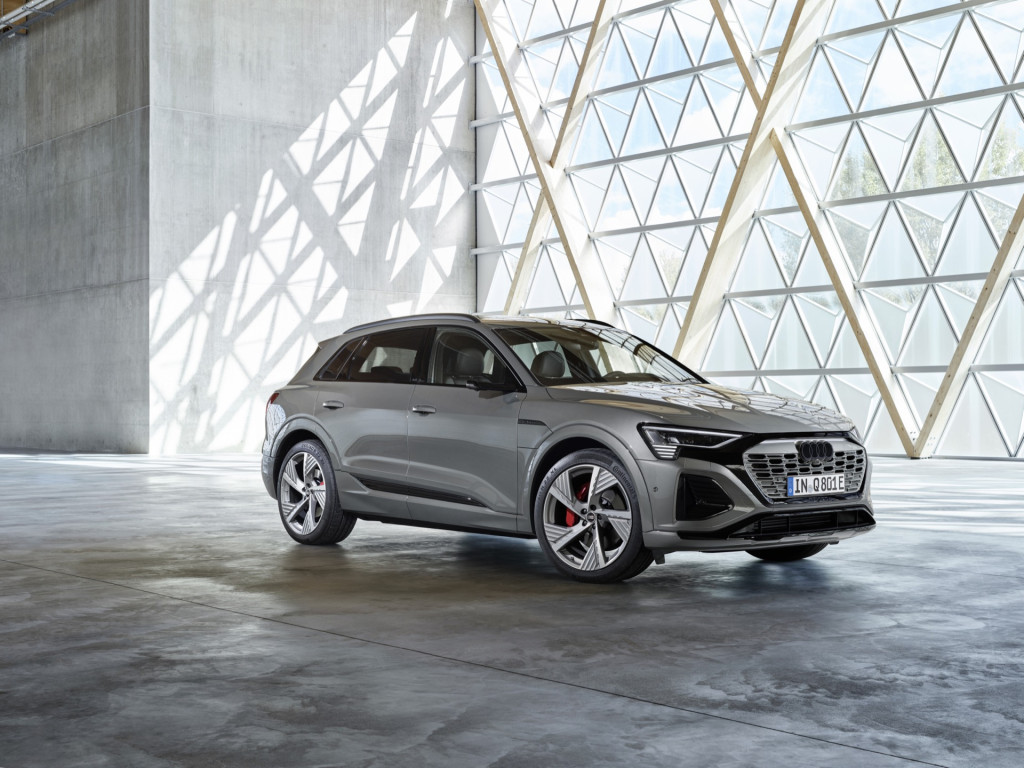
Advertisements
2024 Audi Q8 E-Tron
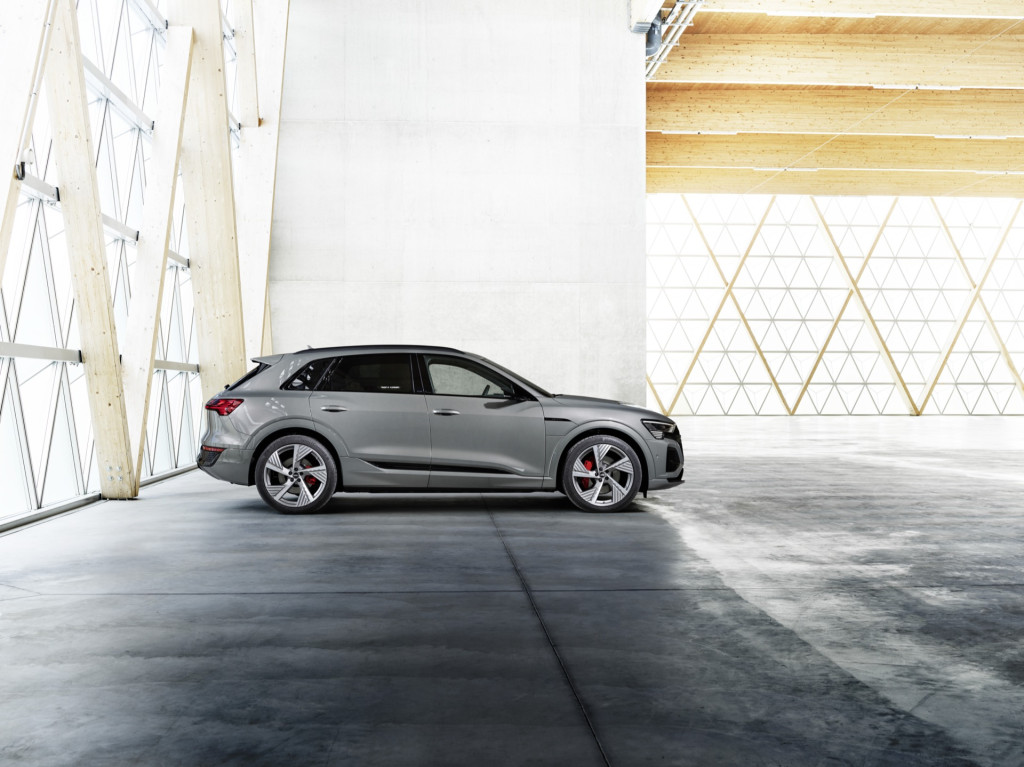
2024 Audi Q8 E-Tron
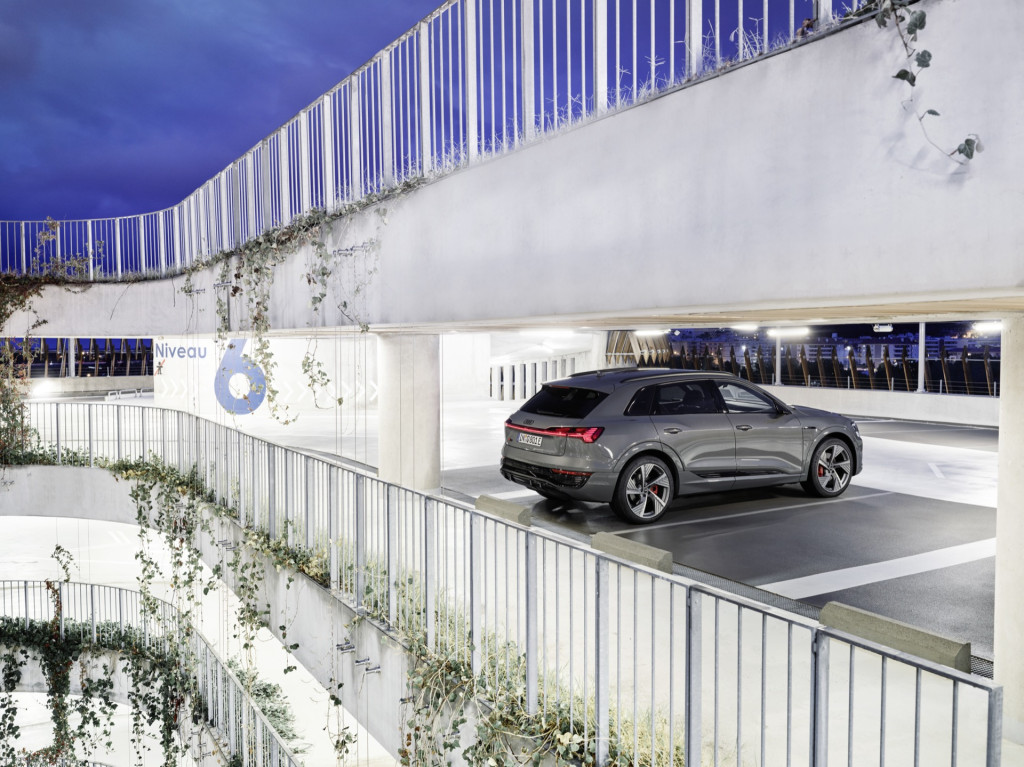
2024 Audi Q8 E-Tron
Audi Q8 E-Tron: Looks more like an ICE SUV
Audi’s updated naming convention for its SUVs (the “Q” ranges) and sedans (the “A” ranges) assign even numbers to EVs, while models with an internal combustion engine (ICE) get odd numbers. So, the range-topping electric SUV formerly known as “E-Tron” is now the Q8 E-Tron. There’s just one problem: an ICE Q8 is already in the lineup and it will coexist with the Q8 E-Tron in defiance of the new naming convention.
To blend the two different vehicles into a single lineup, the electric Q8 has an updated front end that echoes that of the gas version. That means it has a more defined grid pattern in deeper relief, in black or body color, that could pass for the grille of a combustion vehicle. The earlier E-Tron’s flat silver blanking panel suggested its electric powertrain, but it seems that’s no longer the goal.
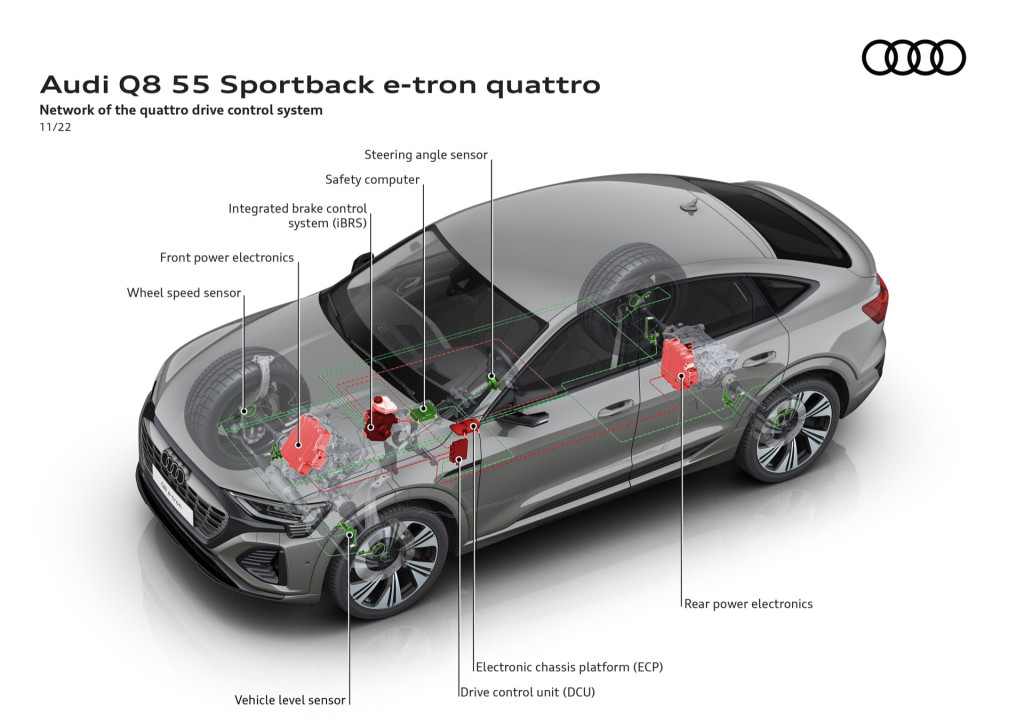
2024 Audi Q8 Sportback E-Tron
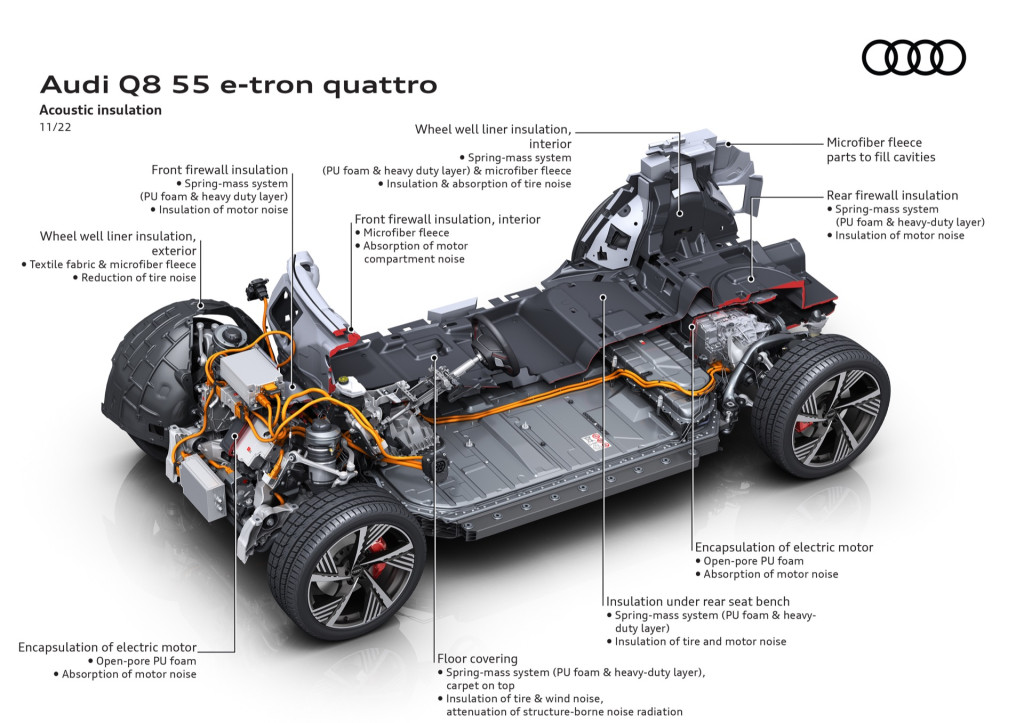
2024 Audi Q8 E-Tron
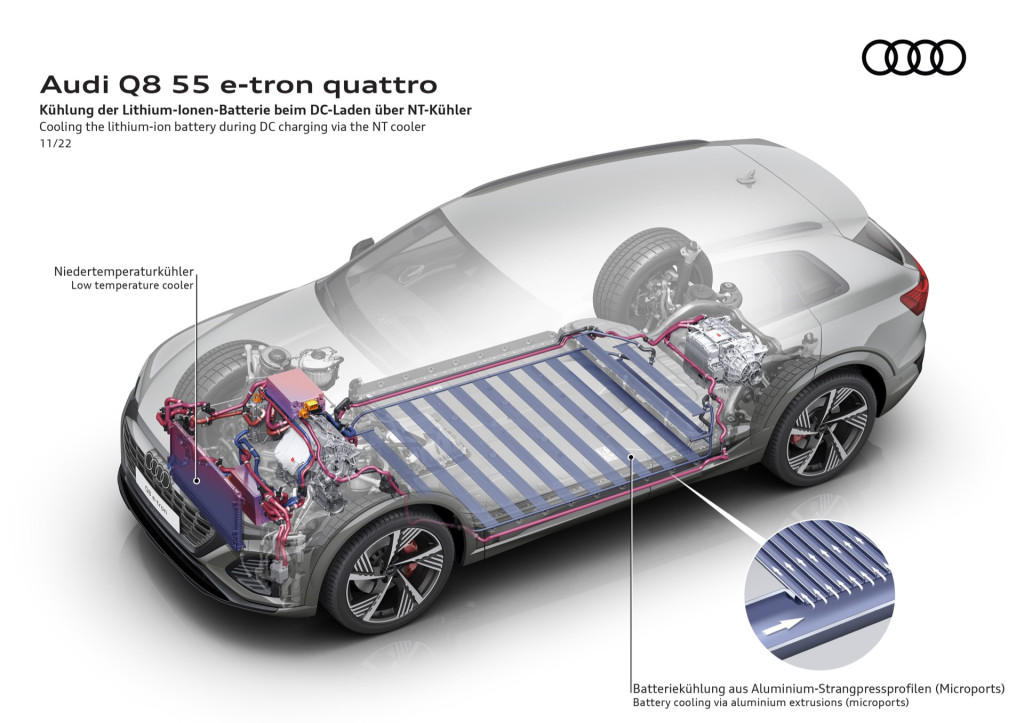
2024 Audi Q8 E-Tron
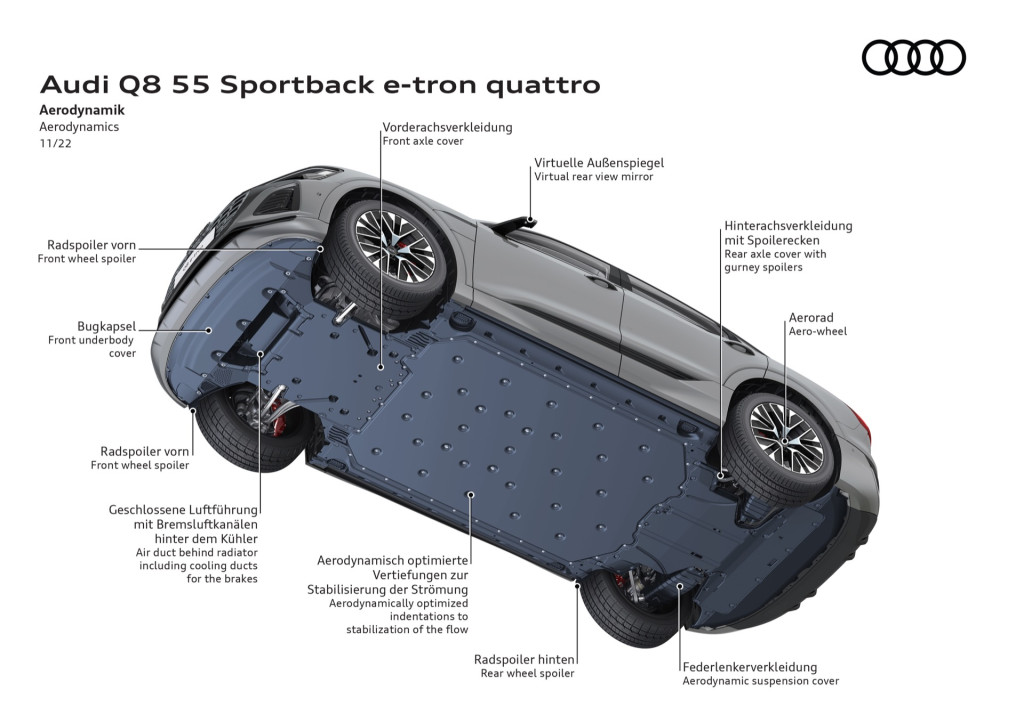
2024 Audi Q8 Sportback E-Tron
The overall effect is subtle, but somehow makes the squarer SUV version of the Q8 E-Tron seem a bit sleeker, despite its substantial presence and bulk. The tall “coupe” tail of the Q8 E-Tron Sportback remains an acquired taste, but it’s more popular outside North America. Sales of the E-Tron Sportback were only 10-15% of the total in previous model years.
Other changes include new wheel designs (in 20-, 21-, and 22-inch sizes) and Q8 badging on the pillars between the doors, and on the tailgate—now in glossy black rather than the traditional chrome. The interior hasn’t changed much; it will be reassuringly familiar to Audi drivers and owners of the earlier E-Tron in particular.
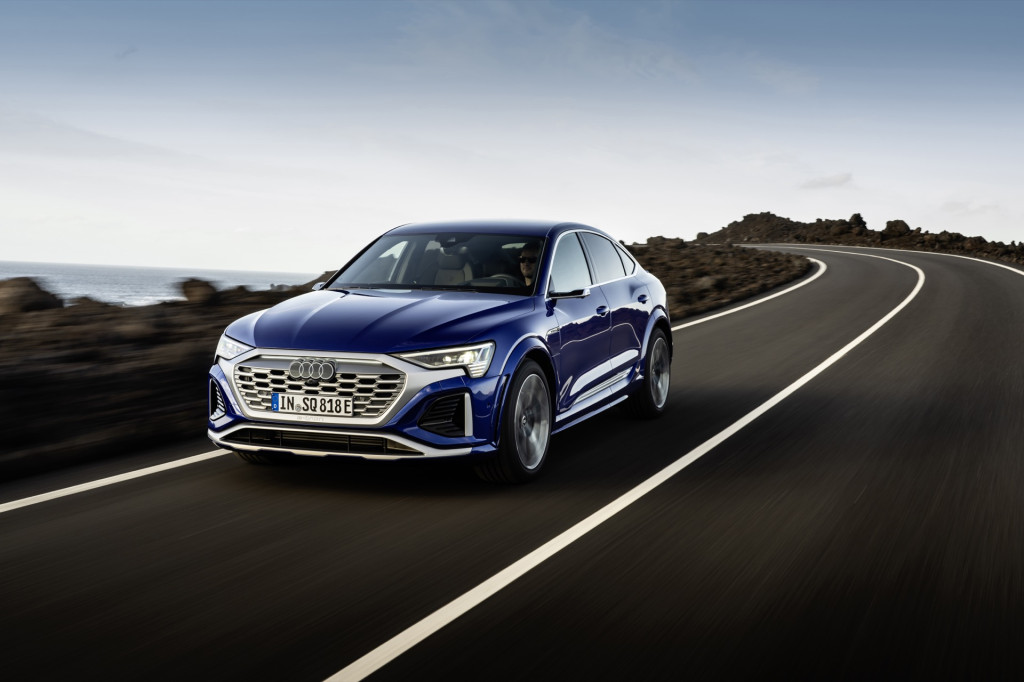
2024 Audi Q8 E-Tron
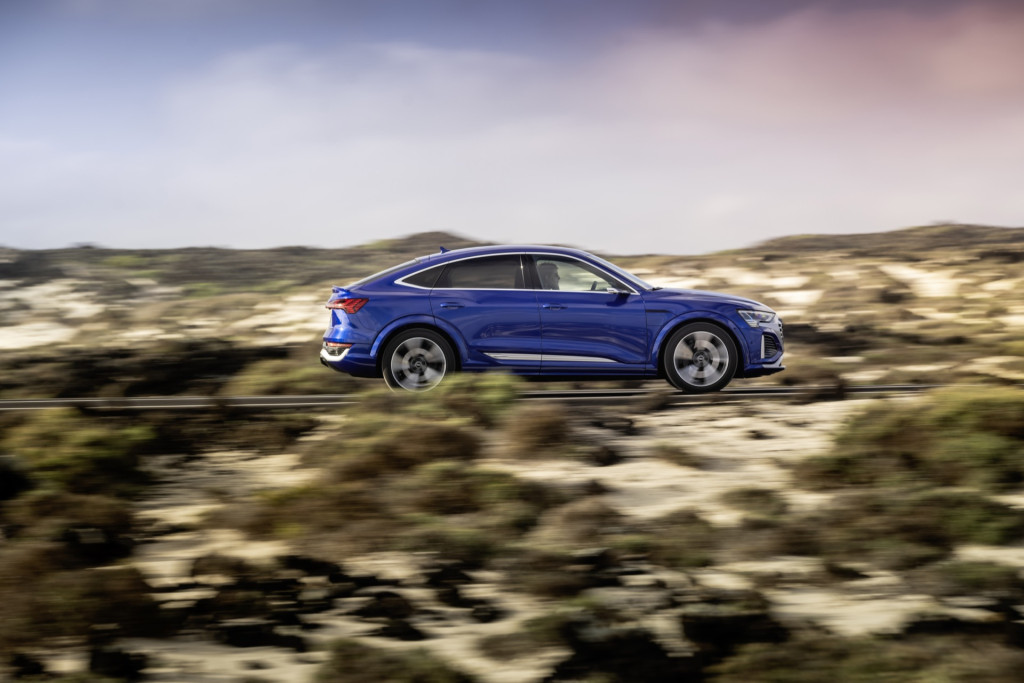
2024 Audi Q8 E-Tron
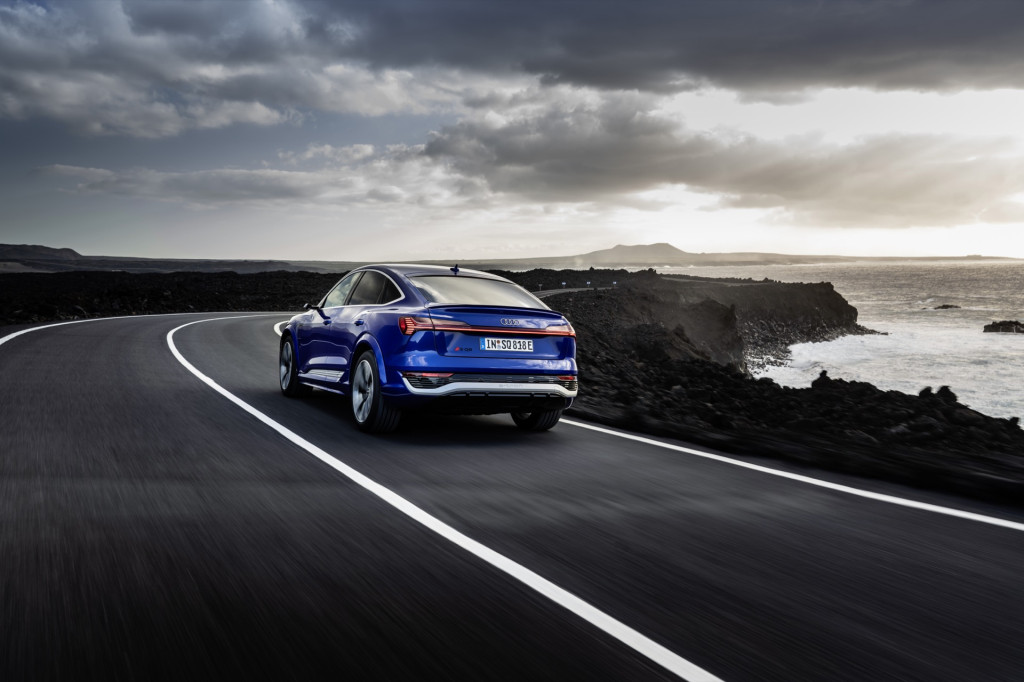
2024 Audi Q8 E-Tron
Audi Q8 E-Tron: Performance evolved, not redefined
Audi had several goals in updating the drive software of its big EVs. Among them were better differentiation among drive modes (Efficiency, Comfort, Auto, Off-road, and All-road) and a sportier feel. Revised bushings and control arms, along with a quicker steering ratio (14.6:1 versus the old 15.8:1) make these heavy SUVs less numb and appliance-like than the previous versions.
As before, all models come with air suspension and adaptive dampers that combine to handle most road conditions well. My only complaint was a bit of head toss and body roll over imperfections in some of the two-lane forest roads on the drive. The Q8 E-Tron powers its rear wheels by default, with the front motor kicking in (faster, Audi says) when needed for traction or cornering performance. It’s all sufficiently seamless and I never detected the transitions.
Acceleration from the higher-capacity battery remains the same, at 5.6 seconds in the 60 mph run. Audi has stayed away from the explosive acceleration offered by Tesla. The front and rear motors combine to produce 355 hp and 414 lb-ft of torque, which ratchets up to 402 hp and 490 lb-ft in the shifter’s Sport mode.
Advertisements
The regenerative braking is largely done through the brake pedal; no setting exists for the “one-pedal driving” preferred by experienced EV drivers. That said, the “Auto” setting for regenerative braking (called “recuperation” by German makers) boosts the regen when following another vehicle or based on map data. It takes a bit of acclimatization, but it’s surprisingly useful in certain types of driving.
Overall, the electric Q8’s dynamics are an evolution of the E-Tron rather than a redefinition. For the record, both early-production Q8 E-Trons I drove were superbly screwed together.
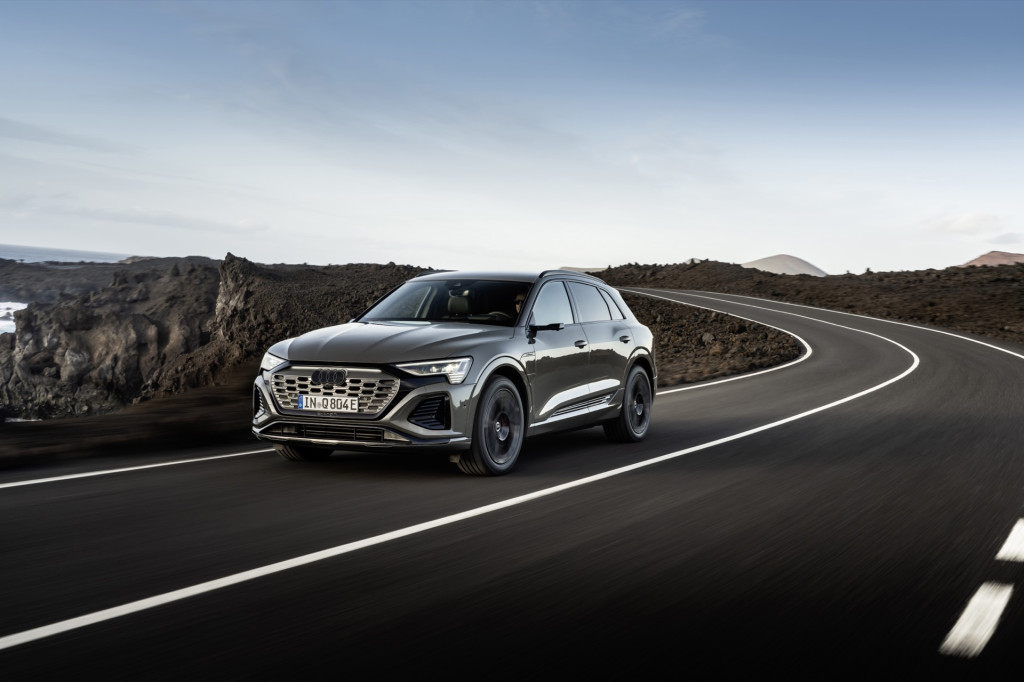
2024 Audi Q8 E-Tron
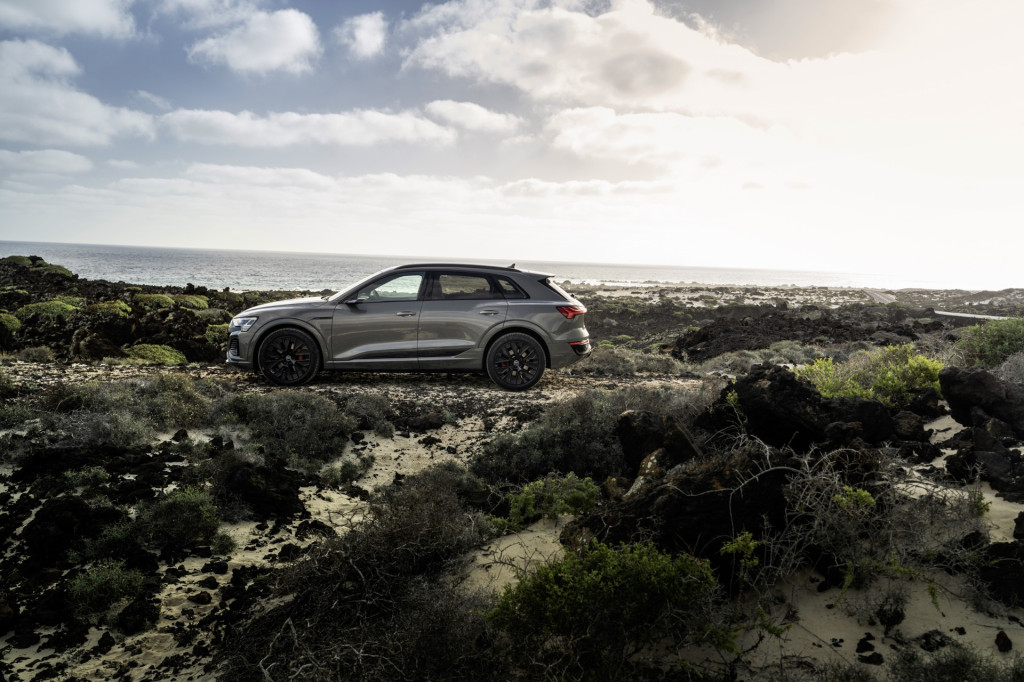
2024 Audi Q8 E-Tron
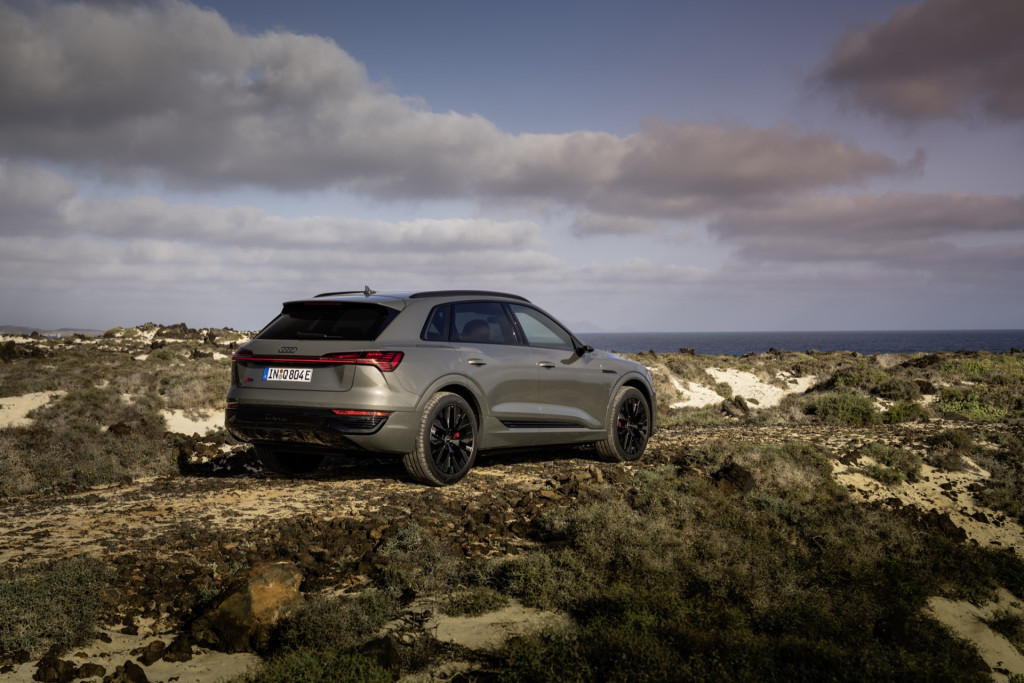
2024 Audi Q8 E-Tron
Audi Q8 E-Tron: Still inefficient but less so
The Achilles Heel of the E-Tron when it launched launch was its inefficiency, which produced a rated range of only 204 miles from its 95-kwh battery pack. This was especially pronounced at highway speeds. Over a month-long loan of a 2020 E-Tron SUV, I never observed efficiency of more than 1.9 to 2.0 miles per kwh at highway speeds—and my month-long efficiency number was just 2.1 mi/kwh.
That compared to roughly 3.0 mi/kwh for a Tesla Model X, also reflected in the competitors’ EPA-rated efficiencies: 74 MPGe for the 2019 Audi E-Tron SUV versus 96 MPGe for the Tesla Model X Long Range of the same year, which had an EPA-rated at 325 miles of range. (Miles Per Gallon Equivalent, or MPGe, is the distance an electric car can travel on the energy contained in 1 gallon of gasoline, or 33.7 kwh.)
For 2024, Audi has made multiple updates to boost the big SUVs’ efficiency, including active grille shutters and special attention to airflow around the wheels and under the vehicle. Overall, the drag coefficients have fallen by 0.02, to 0.29 for the SUV and 0.27 for the Sportback. Equally important, the new nickel-cobalt-aluminum (NCA) cells in the bigger 114-kwh battery (106 kwh usable) deliver an estimated EPA range rating of 300 miles for at least one version.
Indeed, in my 175 miles of driving, I observed better efficiencies: 2.3 to 2.4 mi/kwh. But—and it’s a big but—the drive route contained less than 15 miles of freeway driving, meaning the bulk of the trip was done at speeds closer to 55 mph than the 75-80 mph that’s customary on California highways. In December, Green Car Reports recorded 2.5 mi/kwh in various Q8 E-Tron versions in a drive event on Lanzarote in the Canary Islands—at even lower average speeds.
Audi has raised the charging rate of the new Q8 e-tron to keep charge times roughly the same, even with the higher-capacity battery pack. The onboard Level 2 charger is rated at 11 kw, though some plugs may not be able to provide that. We didn’t get a chance to fast-charge the test cars, but Audi says it has raised the peak DC charging rate of its 400-volt electrical architecture from 150 kw to 170 kw. As before the Q8 e-trons can charge from 10-80% in as little as 31 minutes.
Chalk up a qualified improvement in efficiency, but with an asterisk. EPA efficiency ratings aren’t yet available. We’ll wait for the EPA numbers and a week-long test drive that includes highways before passing final judgment.
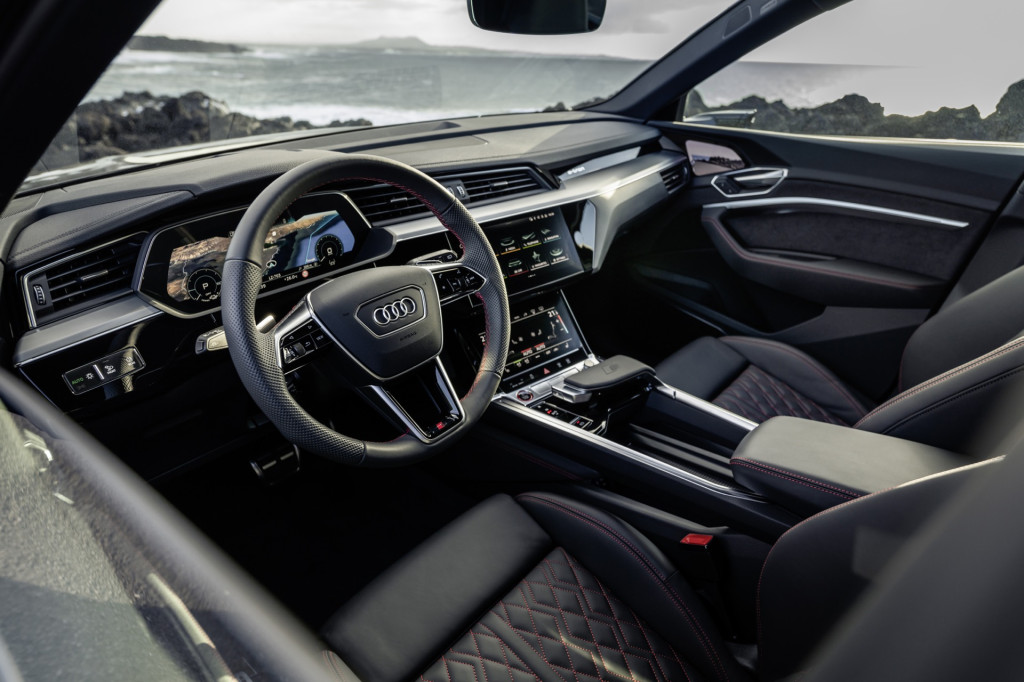
2024 Audi Q8 E-Tron
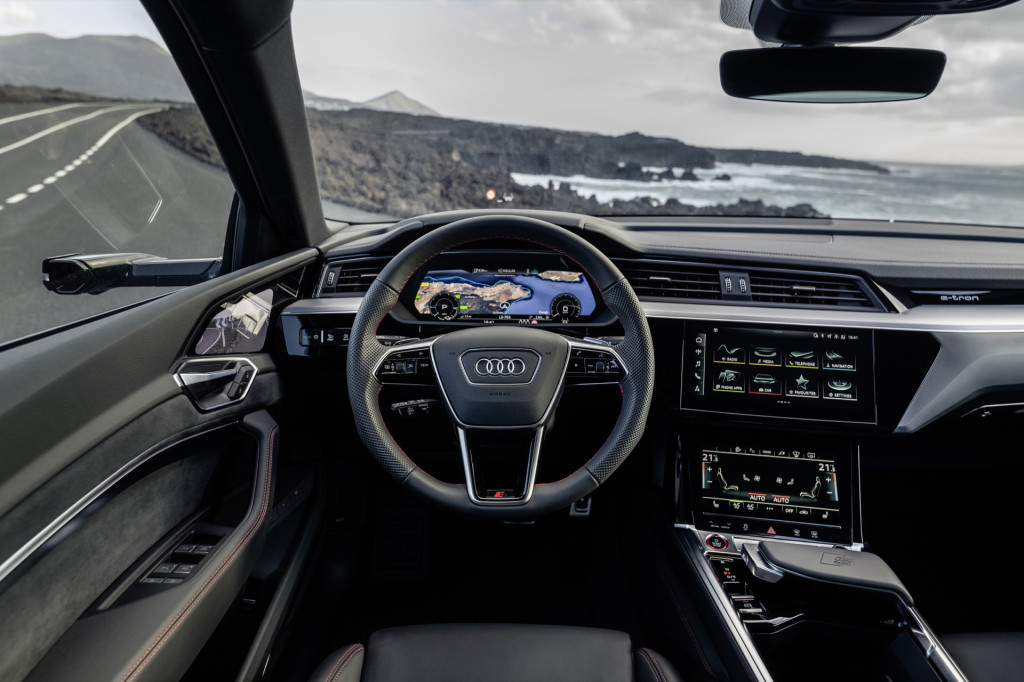
2024 Audi Q8 E-Tron
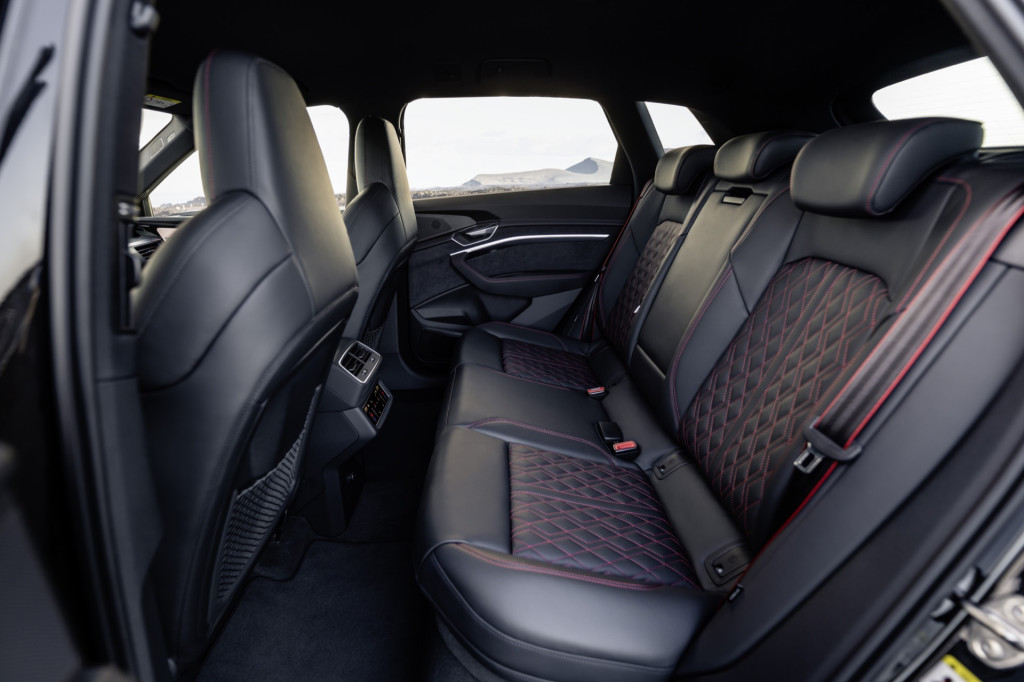
Advertisements
2024 Audi Q8 E-Tron
Can Audi conquer Tesla?
With sales of 1,530 units in 2023, the big E-Tron SUV pair—now stickering from $76,000 including delivery—has become the pricier elder sibling of the higher-volume Q4 E-Tron range that starts at about $51,000.
Could the updated E-Trons lure away luxury buyers whose Model Xes are now several years old? Certainly the Audis are more traditionally luxurious, and they offer an established nationwide network of dealers to provide service where needed.
The problem is that Tesla drivers have become used to the ubiquitous, seamless, ultra-reliable Supercharger fast-charging network that may now be the single biggest advantage of owning a Tesla. The Audis—and every other non-Tesla EV—rely on a patchwork collection of competing DC fast-charging networks now engaged in a land grab that prioritizes new installations over keeping the stations actually running and capable of charging any EV that drives up.
When a pair of EV reporters asked Audi executives how it planned to compete with Tesla’s Supercharging advantage at the drive program, they pointed to the two years of unlimited free fast charging on the fast-expanding Electrify America network that comes with any Q8 E-Tron. Questioned in detail about that network’s rising unreliability, with more than one in five charging attempts unable to complete as measured by JD Power in a March 2023 report, the execs suggested Audi’s EV owners will do the bulk of their charging at home.
That’s true, but it misses the point. A Tesla SUV can do a long road trip without the driver having to worry that a scheduled charging stop will land them at chargers that are dead, damaged, under repair, or downrated. Audi EV owners do not presently have that confidence.
Audi’s response? “Our buyers have multiple vehicles, so they can always choose to use a gasoline model for those occasional long trips. They’ll enjoy an excellent electric car for daily use.” That’s discouraging for 2023, but it helps answer my original question: Tesla owners may be attracted to the Q8 E-Tron’s features, performance, and other factors, but many of them won’t switch until nationwide CCS fast charging is as reliable and ubiquitous as Supercharging.
Today, that seems a long way away.
Audi provided airfare and lodging for Motor Authority to bring you this firsthand drive report.

